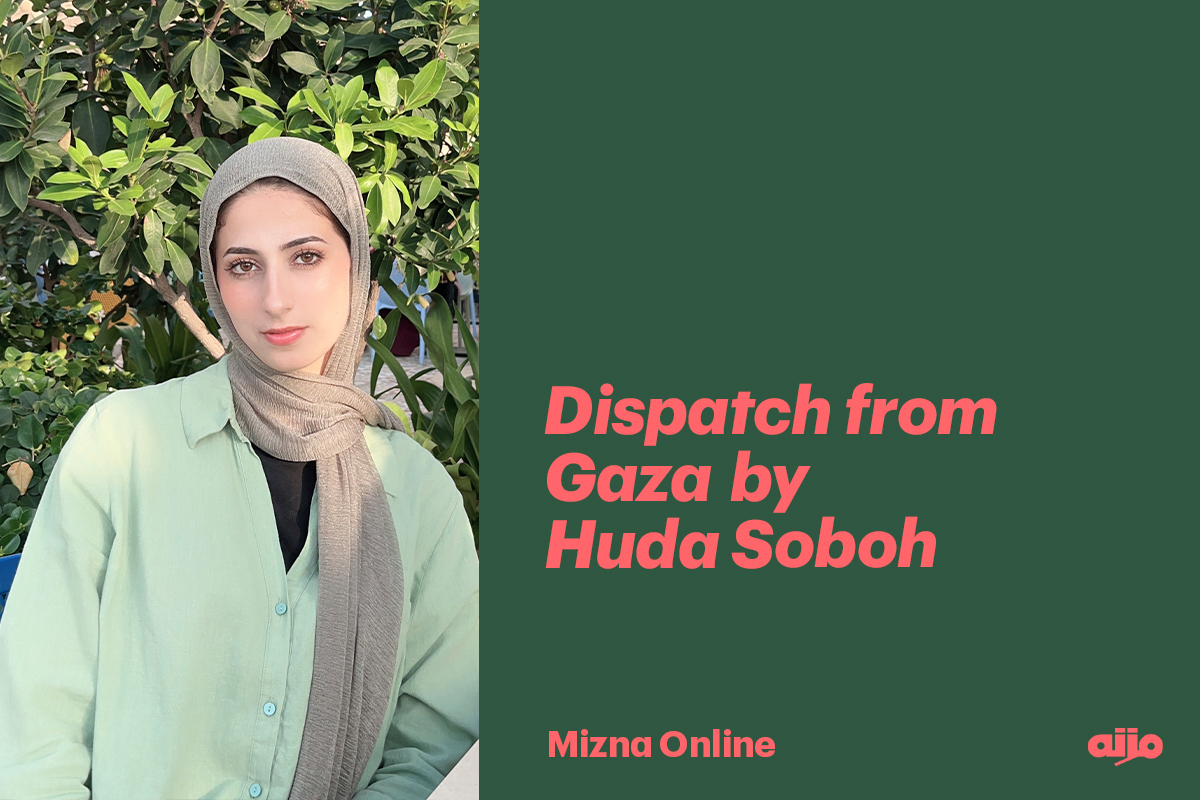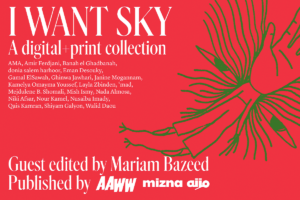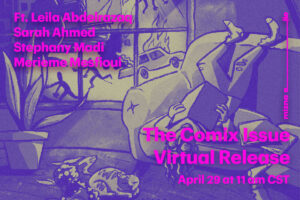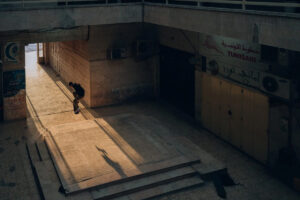
March 20, 2024
Dispatch from Gaza
by Huda Soboh
A few weeks ago, I had the privilege of reading at a People’s Night of Poetry and Music for Palestine event, co-organized by Jess X Snow, Denice Frohman, and the lovely folks at La La Lil Jidar—a Philadelphia-based artist collective and archival project documenting the Zionist apartheid wall for over twenty years. At our reading, some activists in La La Lil Jidar’s collective brought the work of one of their young Gazan community members, Huda Soboh, into the space. I witnessed how Soboh’s words stunned the whole room into silence. Afterward, with the more than 250 people in attendance, I participated in the recording of a video message of gratitude to Soboh. It is a deep honor to be publishing her work, in the form of a dispatch from Gaza that she wrote herself in English.
—George Abraham, Mizna executive editor
Each morning, as the first rays of sunlight pierce through the darkness, I find myself drawn to the window, searching for that familiar sight. And when I see them—those vibrant kites painted against the backdrop of the azure sky—my heart swells with a sense of hope that defies the despair that threatens to consume us.
Huda Soboh
Dispatch from Gaza
by Huda Soboh
In Rafah, the heart of Gaza, where the echoes of war reverberate through the streets, and the air is thick with grief, uncertainty, and fear of hunger, there exist some glimmers of hope that dance across the sky each day—kites. From the window of my shelter, where the walls bear witness to the agonizing suffering of displacement and the nights are haunted by the sounds of constant air strikes, the sight of these colorful kites brings a sense of solace.
The war in Gaza is a harsh reality that we live and breathe every day. It is the constant fear of airstrikes and bombings.We think it is also the agonizing wait for our return home. Then we are informed of our home, reduced to rubble in an instant. It is the relentless cycle of violence that tears families apart and leaves scars that may never fully heal.
Amid this turmoil, the sight of kites soaring high in the sky serves as a reminder that, even in this destruction, there is still light to be found that can heal our wounds. Each morning, as the first rays of sunlight pierce through the darkness, I find myself drawn to the window, searching for that familiar sight. And when I see them—those vibrant kites painted against the backdrop of the azure sky—my heart swells with a sense of hope that defies the despair that threatens to consume us.
But there are days when the kites do not appear, when the sky remains empty and the weight of the last 143 days hangs heavy in the air. Those are the days when the horrors of the night before linger like a dark cloud, casting a shadow over our hopes and dreams. It means that the spirit of the kids—who still find the urge to live a childhood and play with kites between the rubble—was either scared to death that night, or faced death itself. It is on those days that we are reminded of the fragility of hope, how easily it can be extinguished by this cold-blooded world.
Rafah
March 2, 2024

Huda Soboh is a nineteen-year-old Palestinian residing in Gaza and currently displaced in Rafah. She thinks of writing as her way of resilience—a sanctuary so that the devastation does not consume her spirit. She is a digital economics student who is planning to continue her studies abroad due to the destruction of universities in Gaza.

Toward a Free Palestine: Resources to Learn About and Act for Palestine
We are proud to present this text as part of a list of resources to take action for and learn about Palestine, as well as works by Palestinian artists, writers, activists, and cultural workers.










